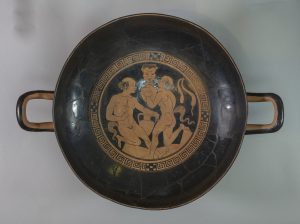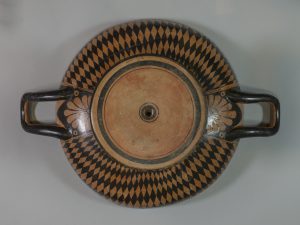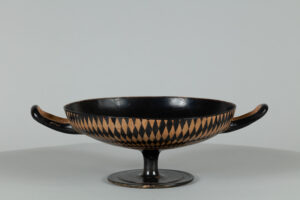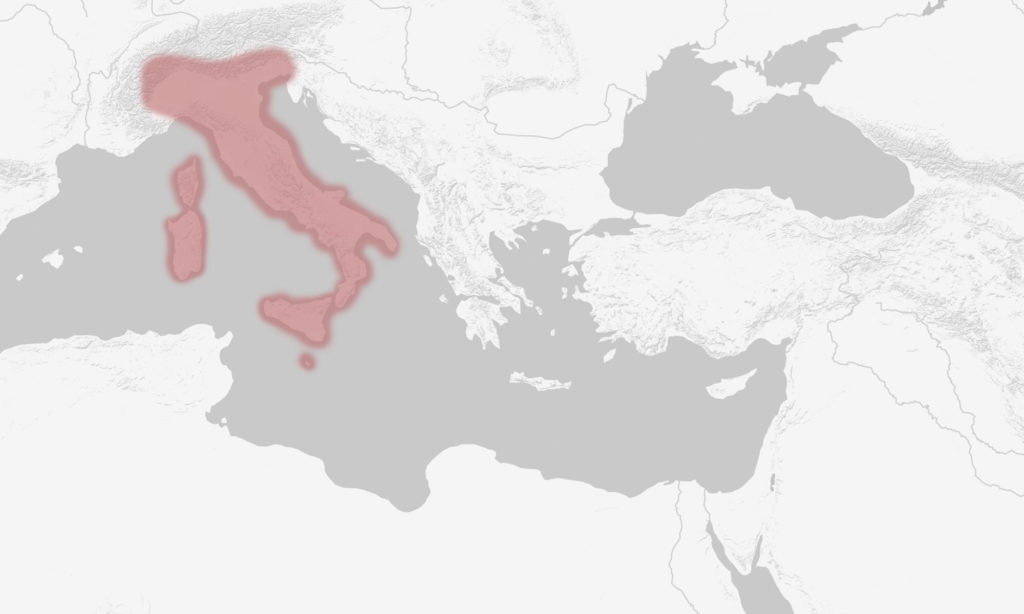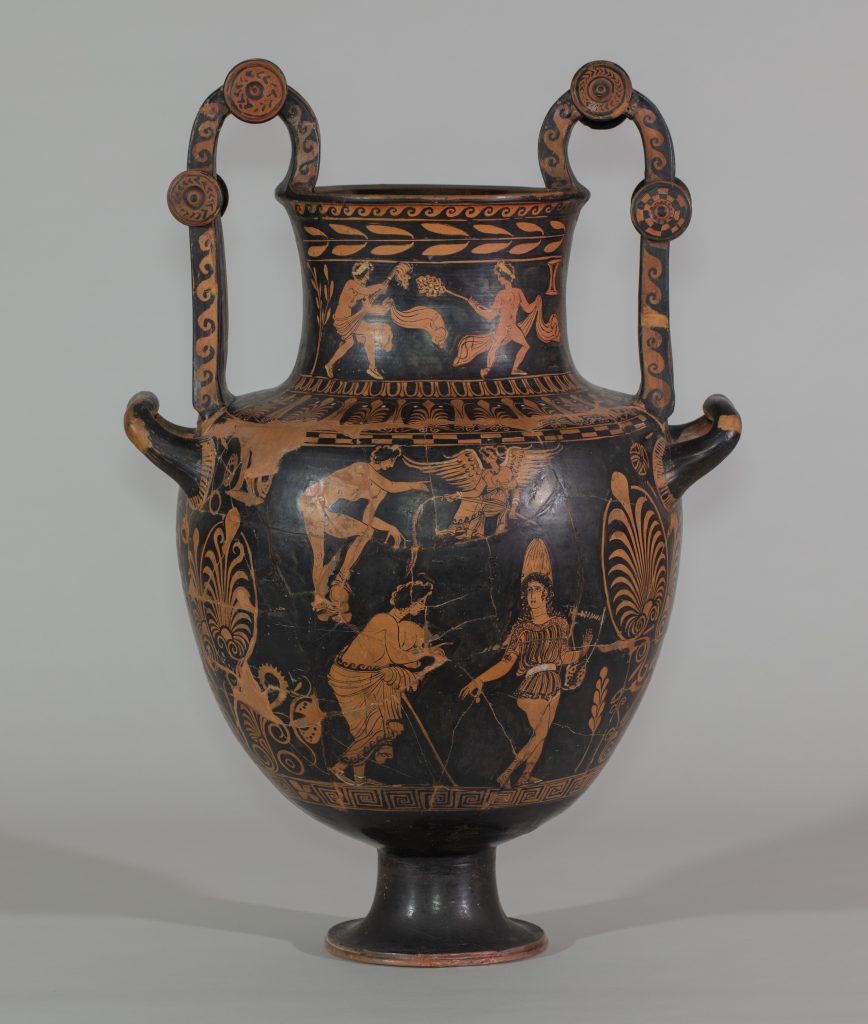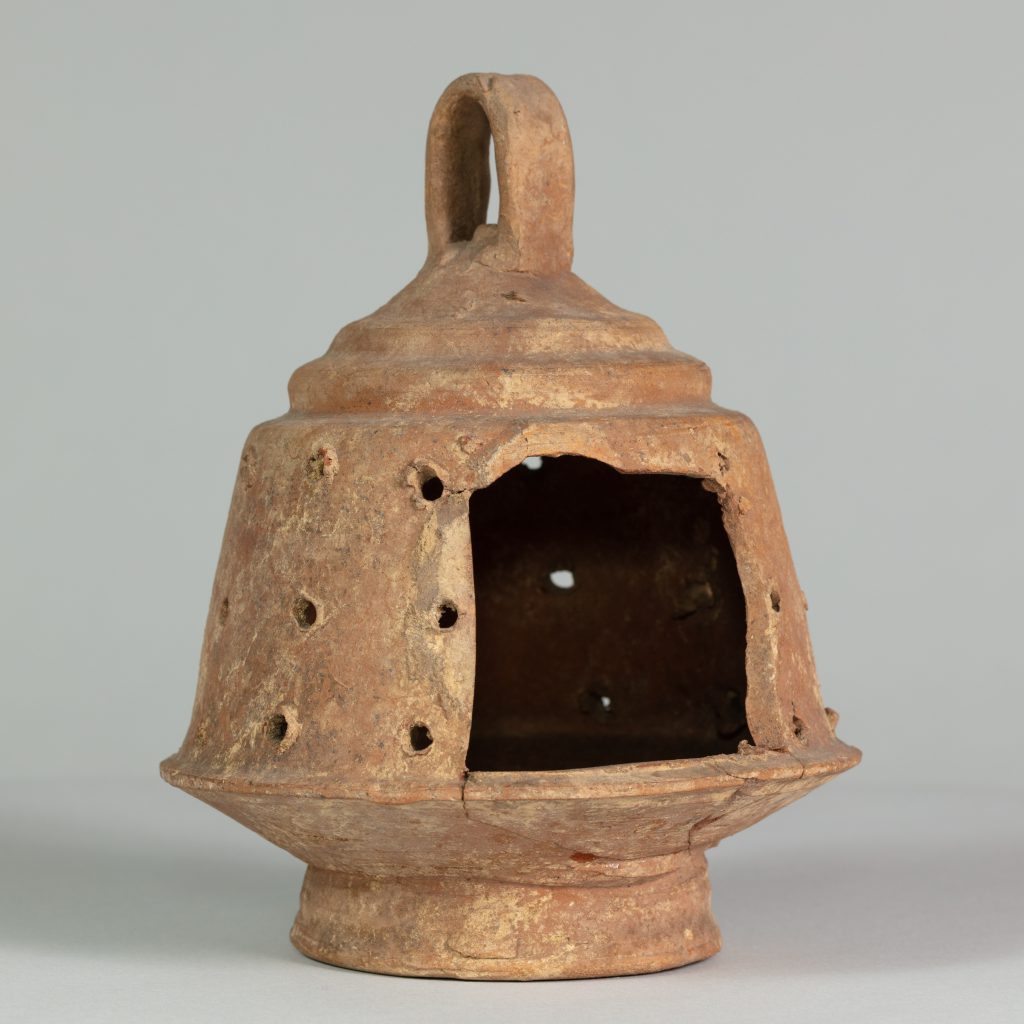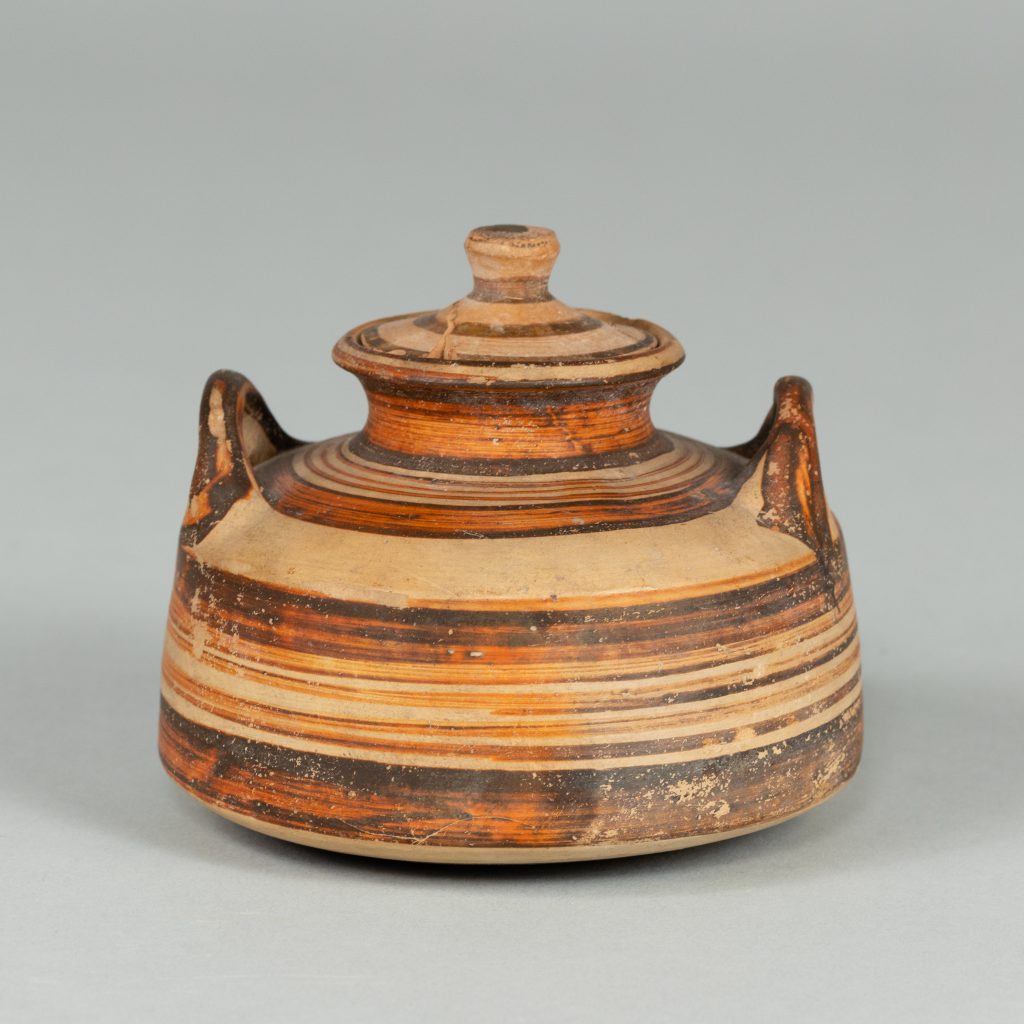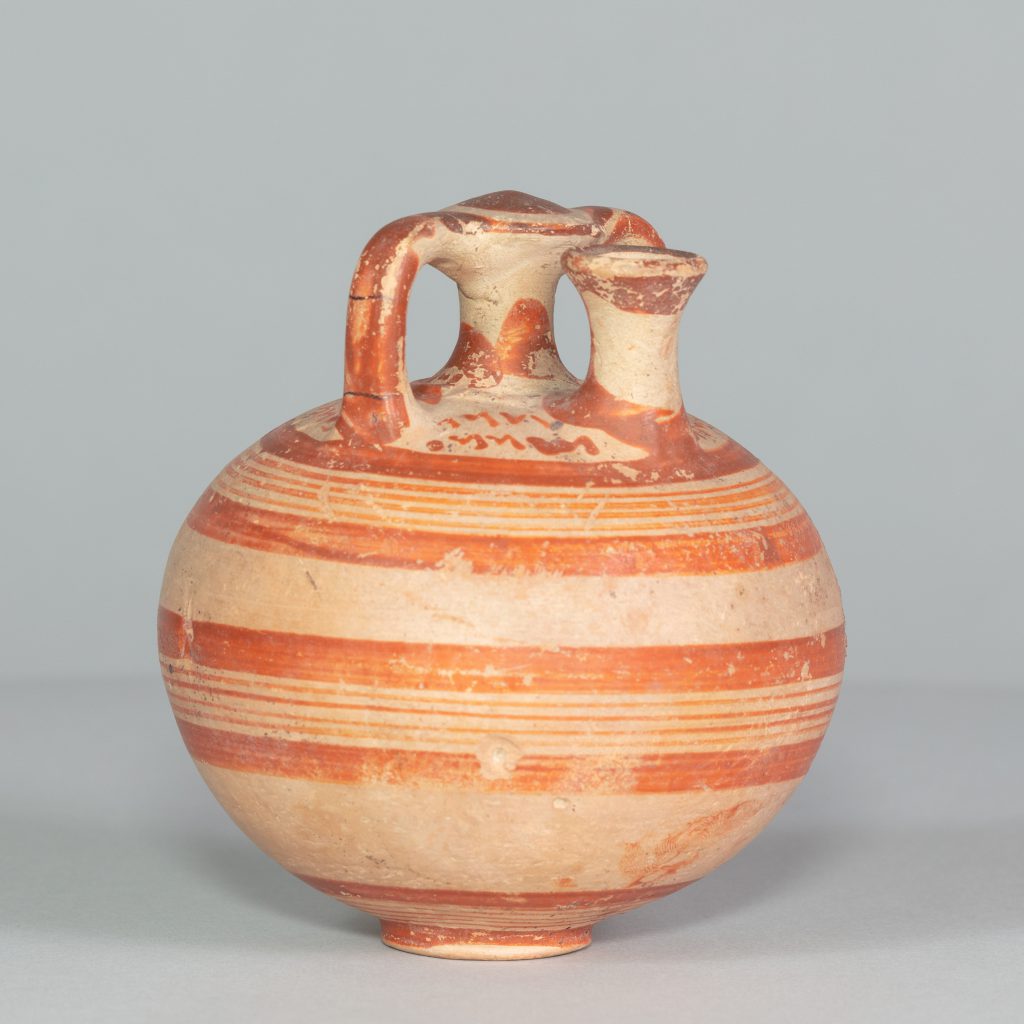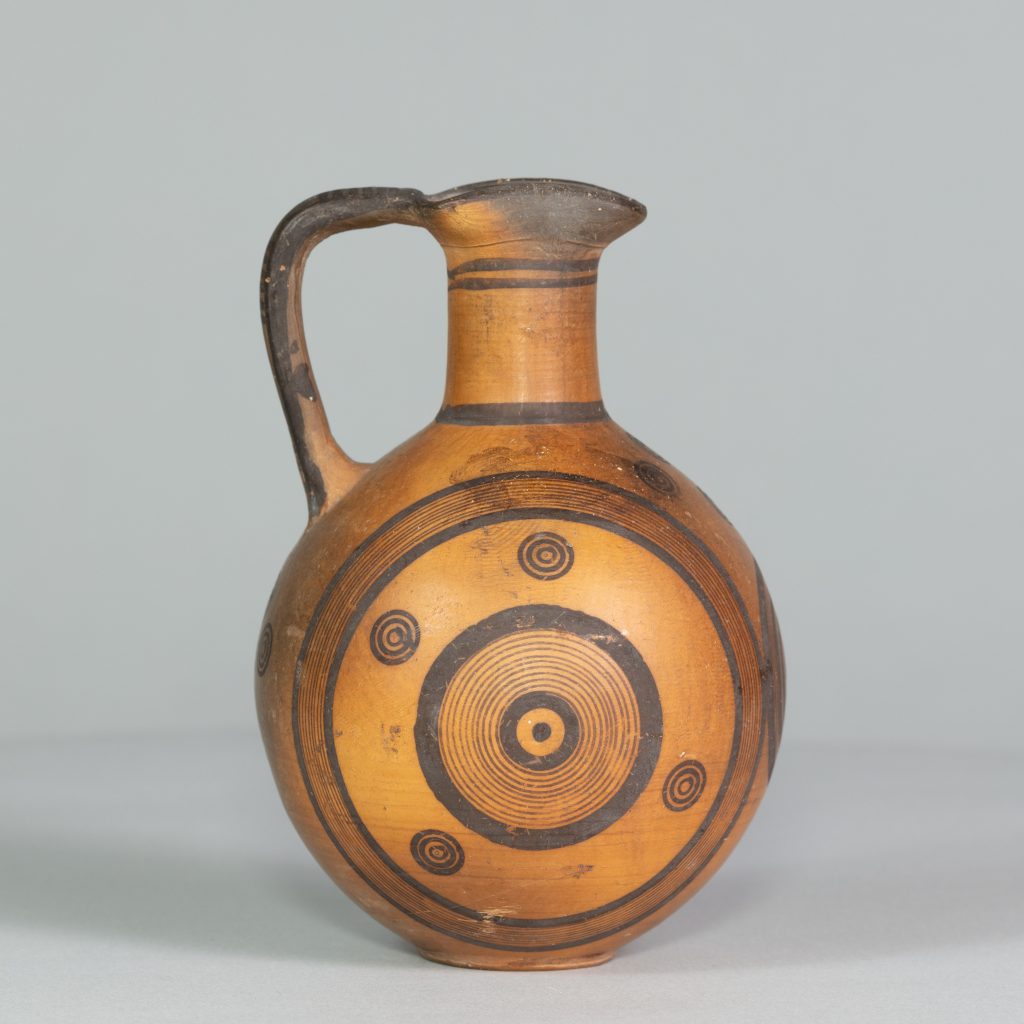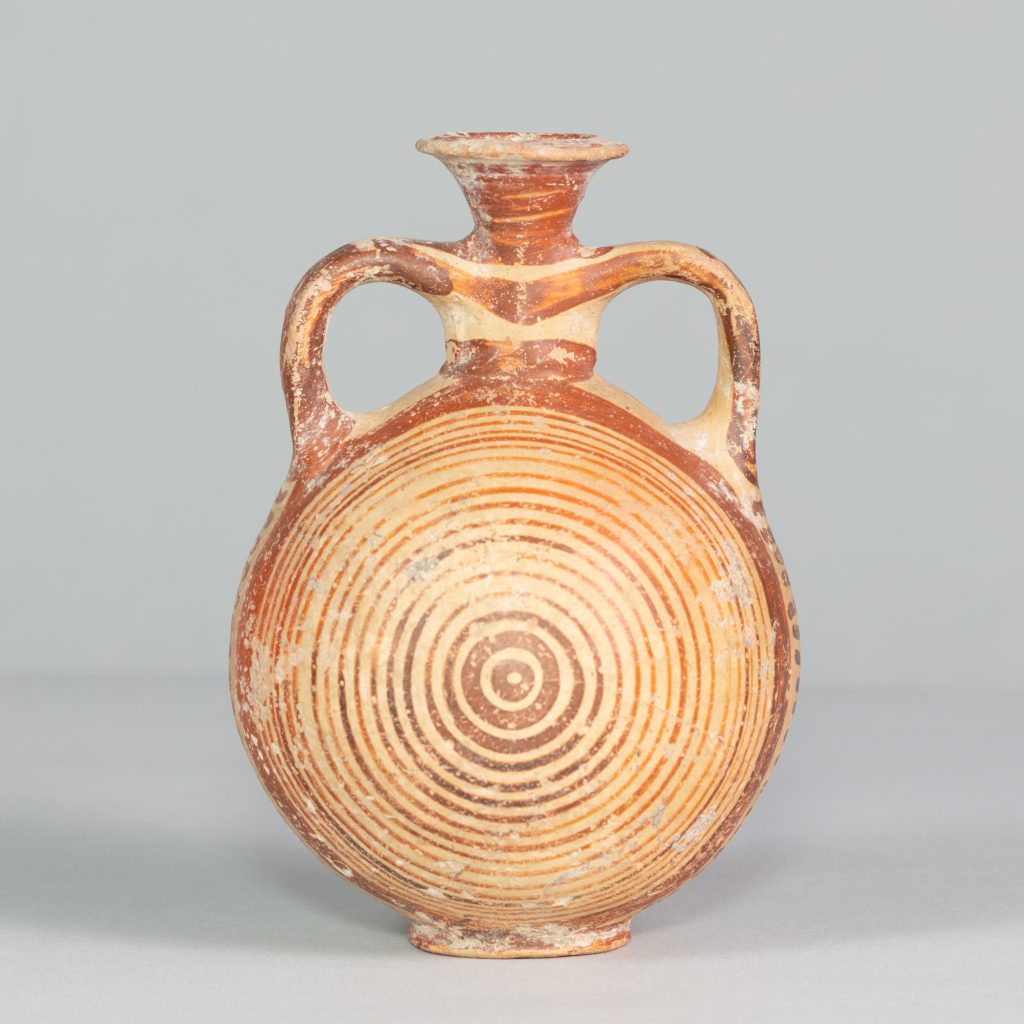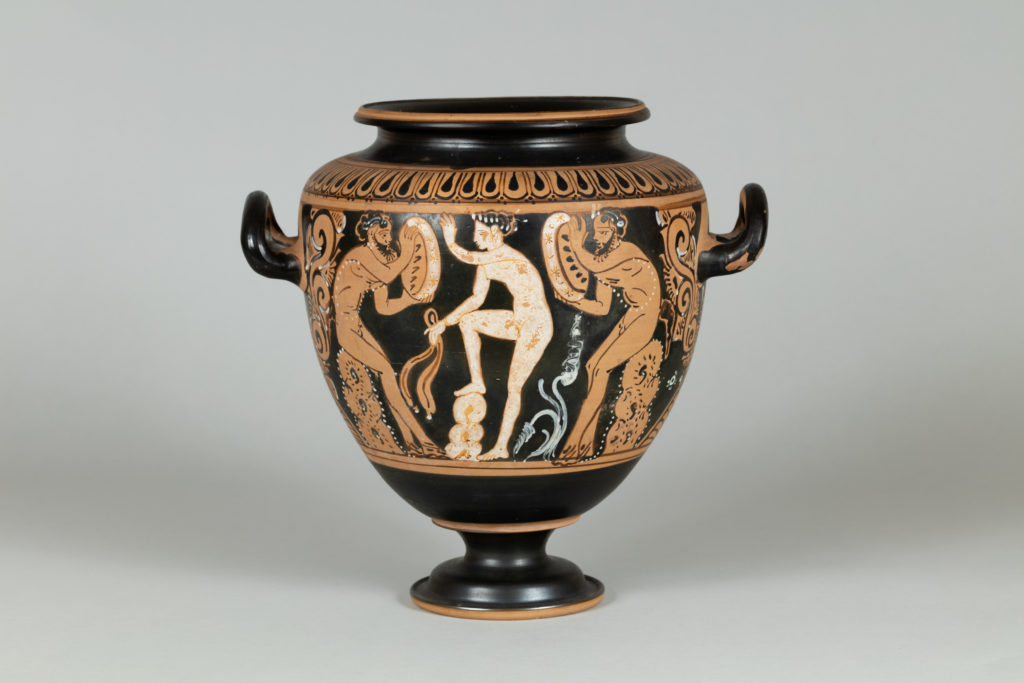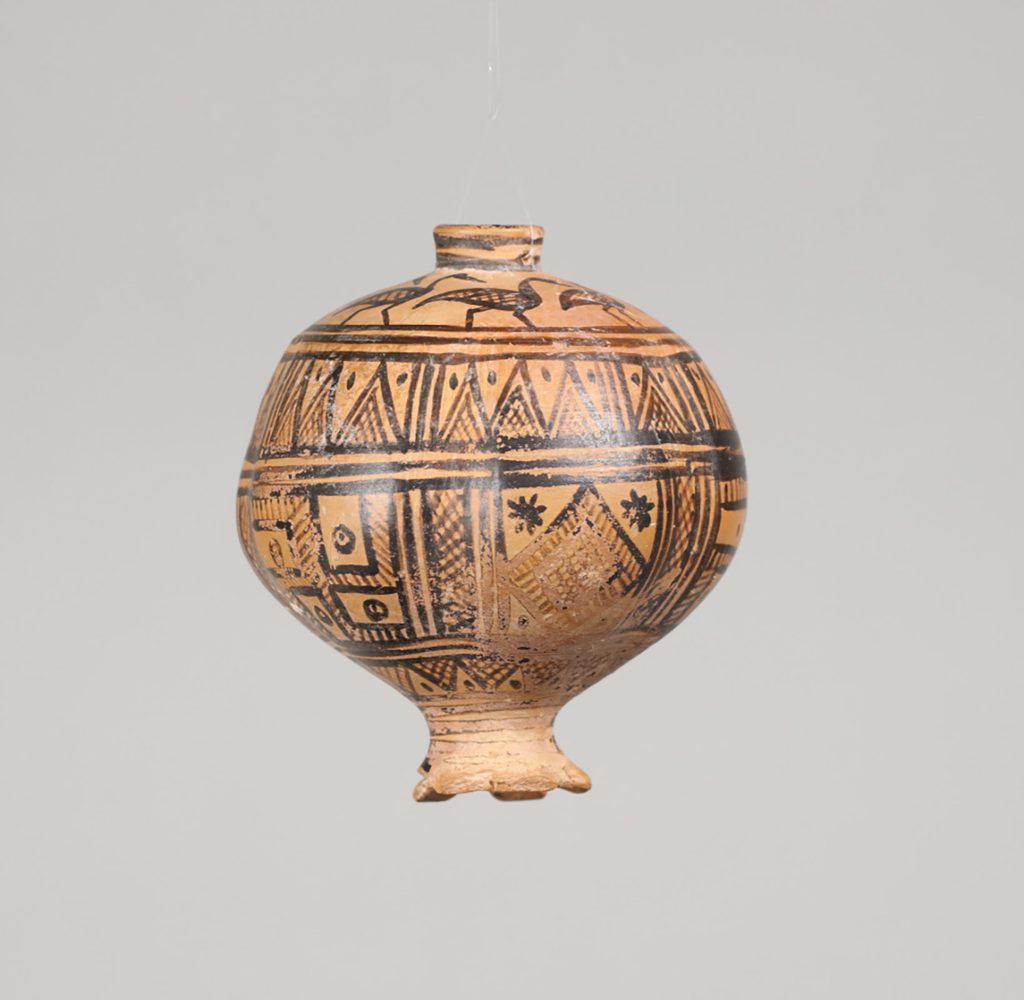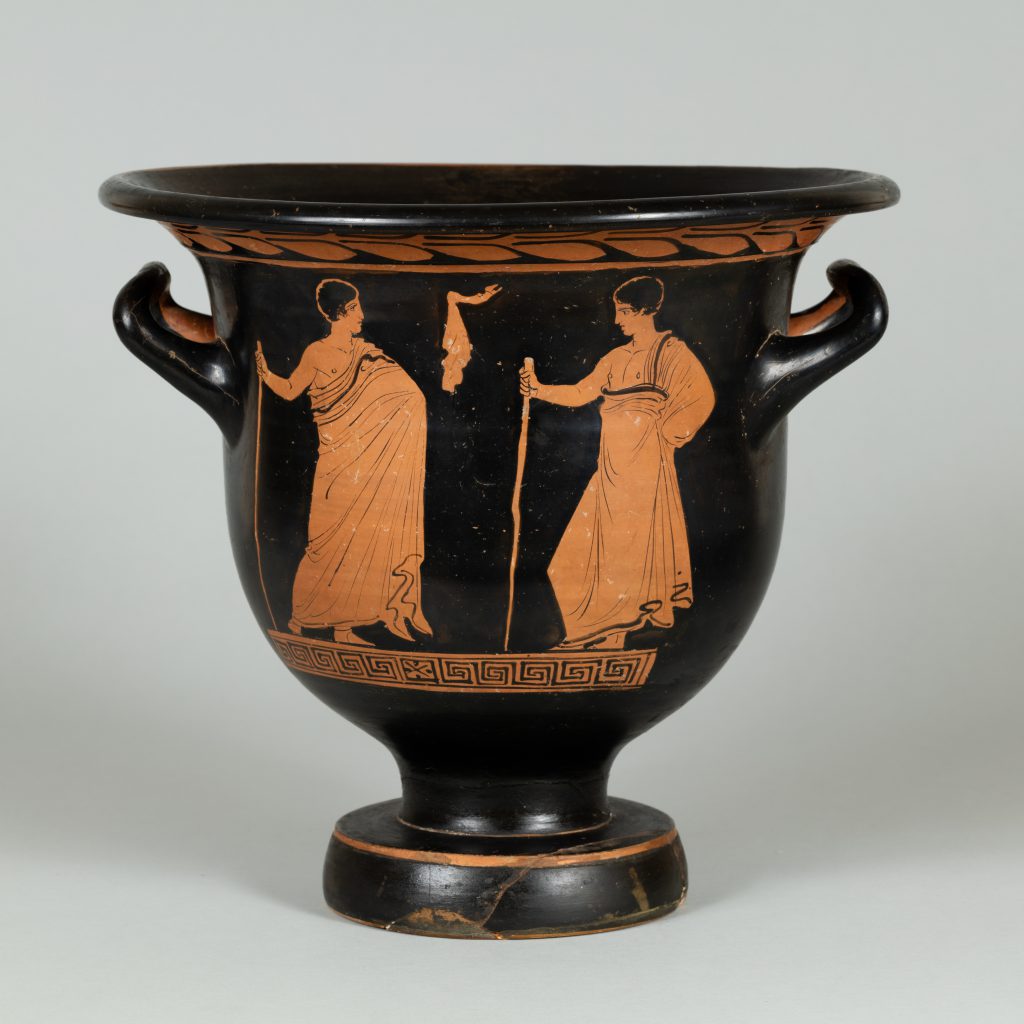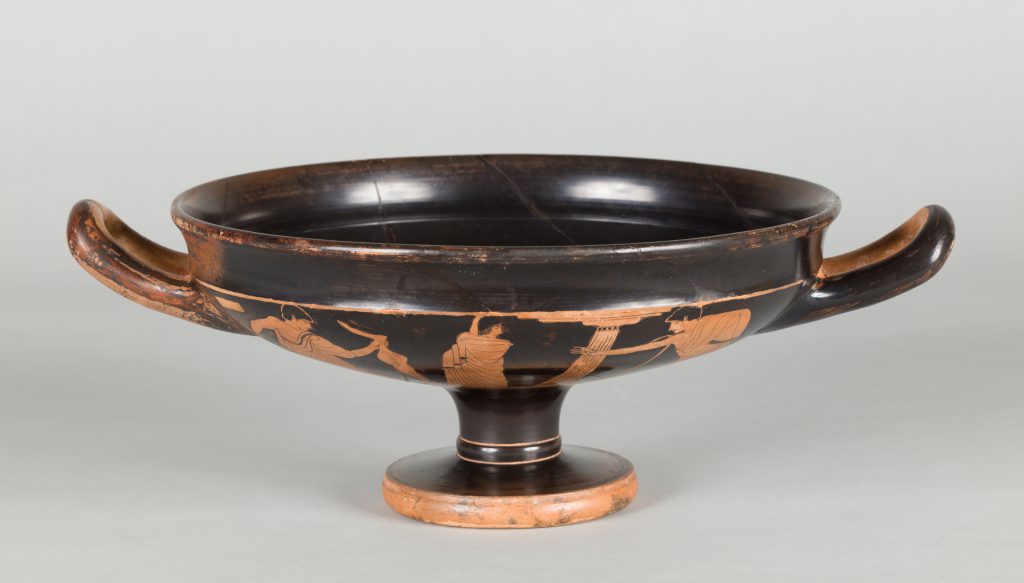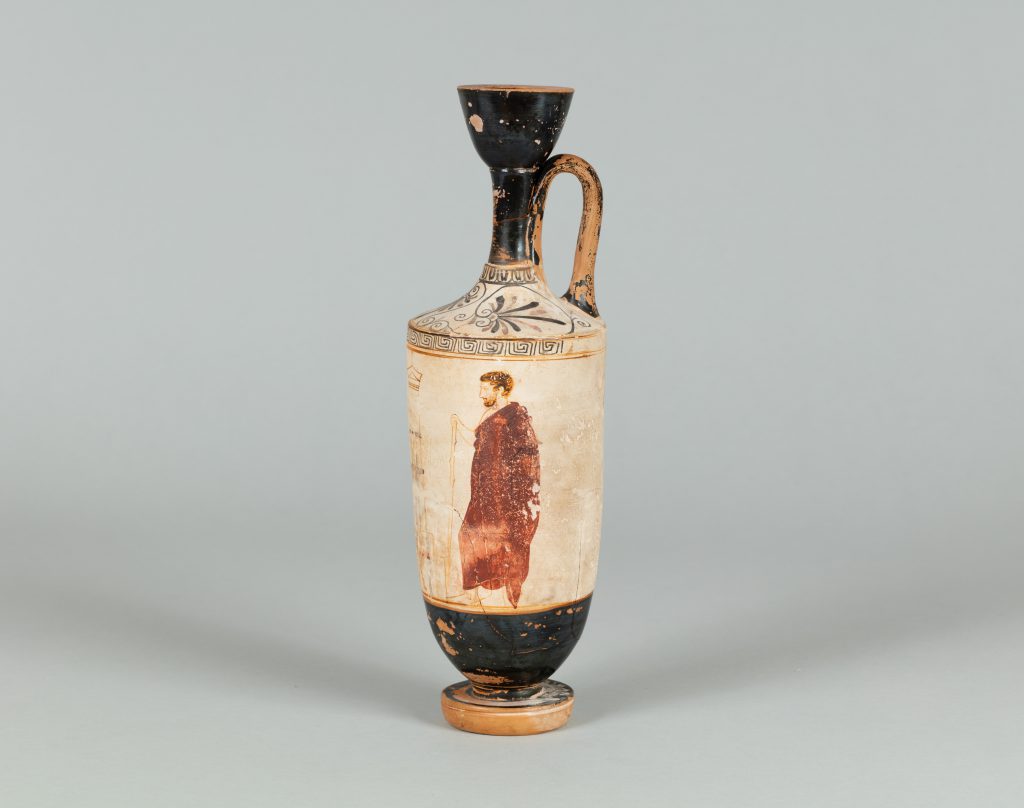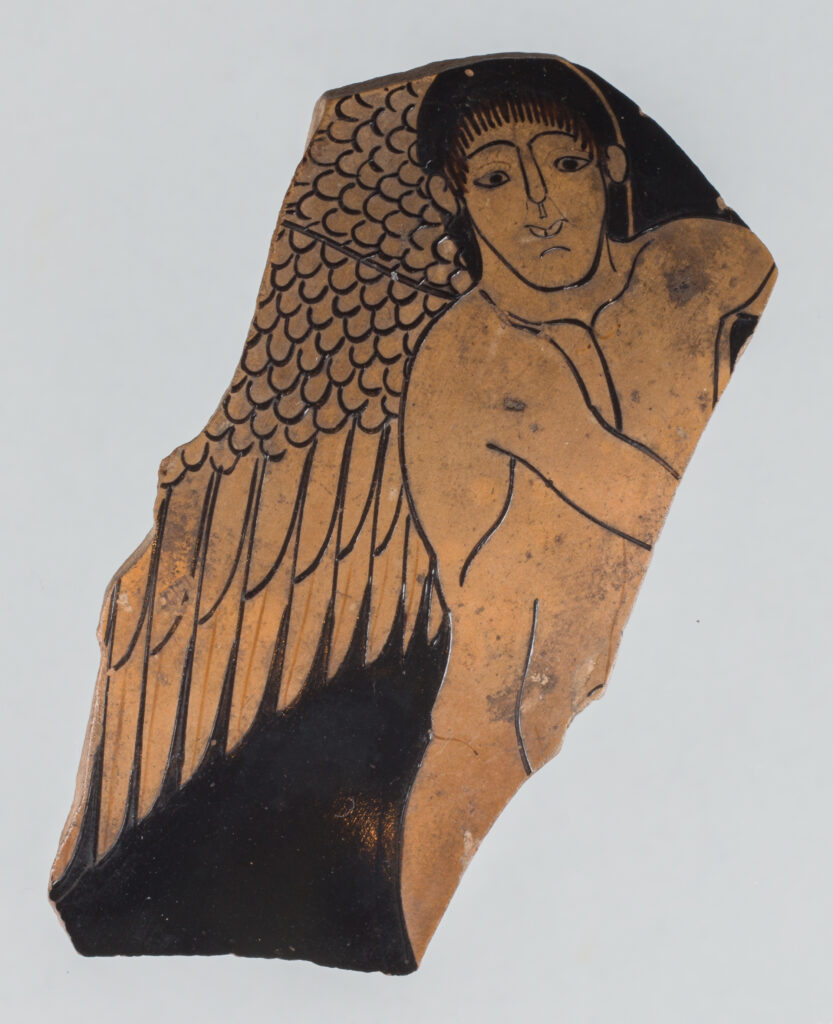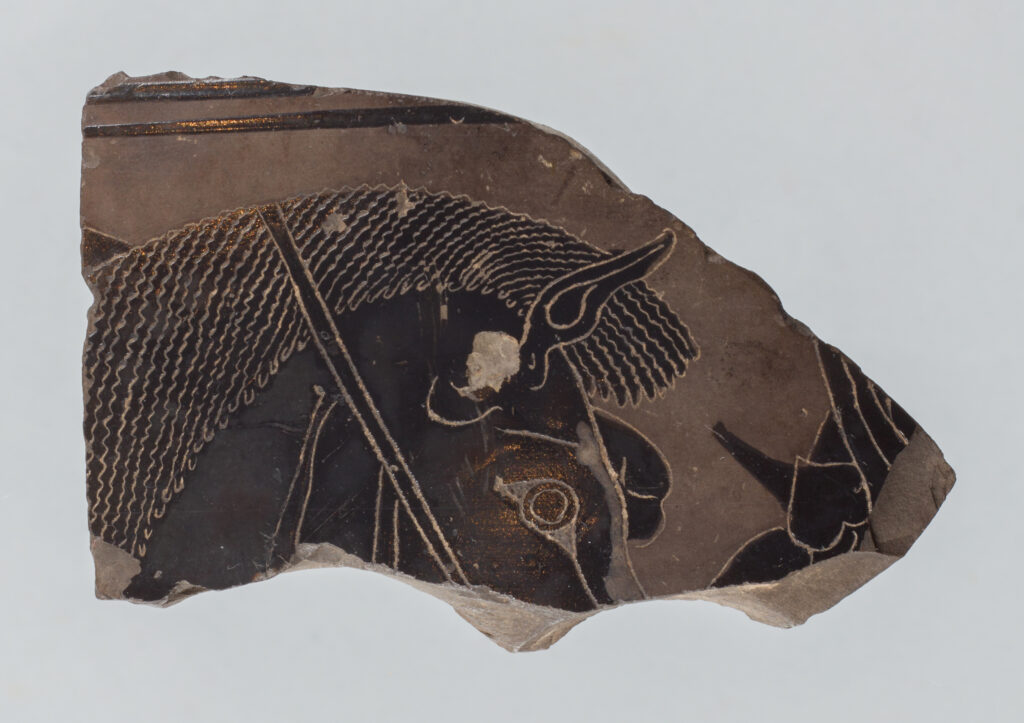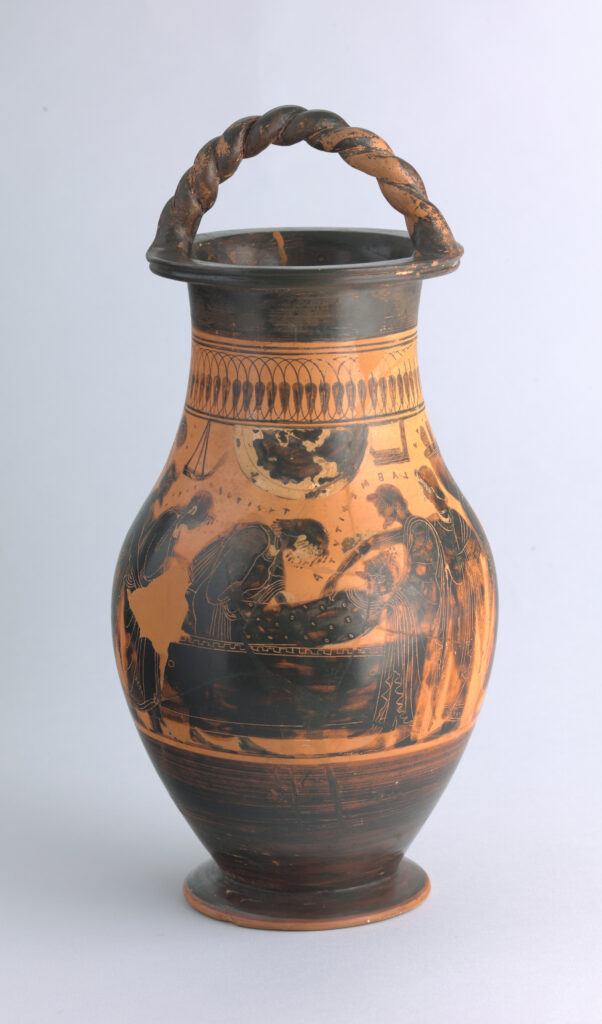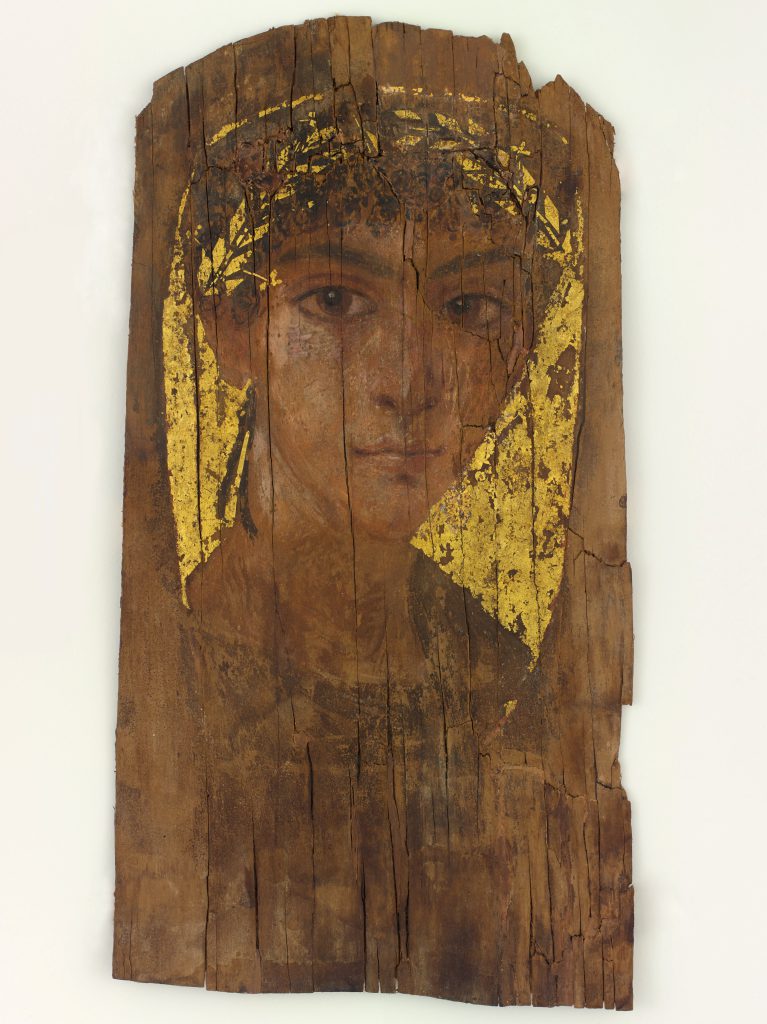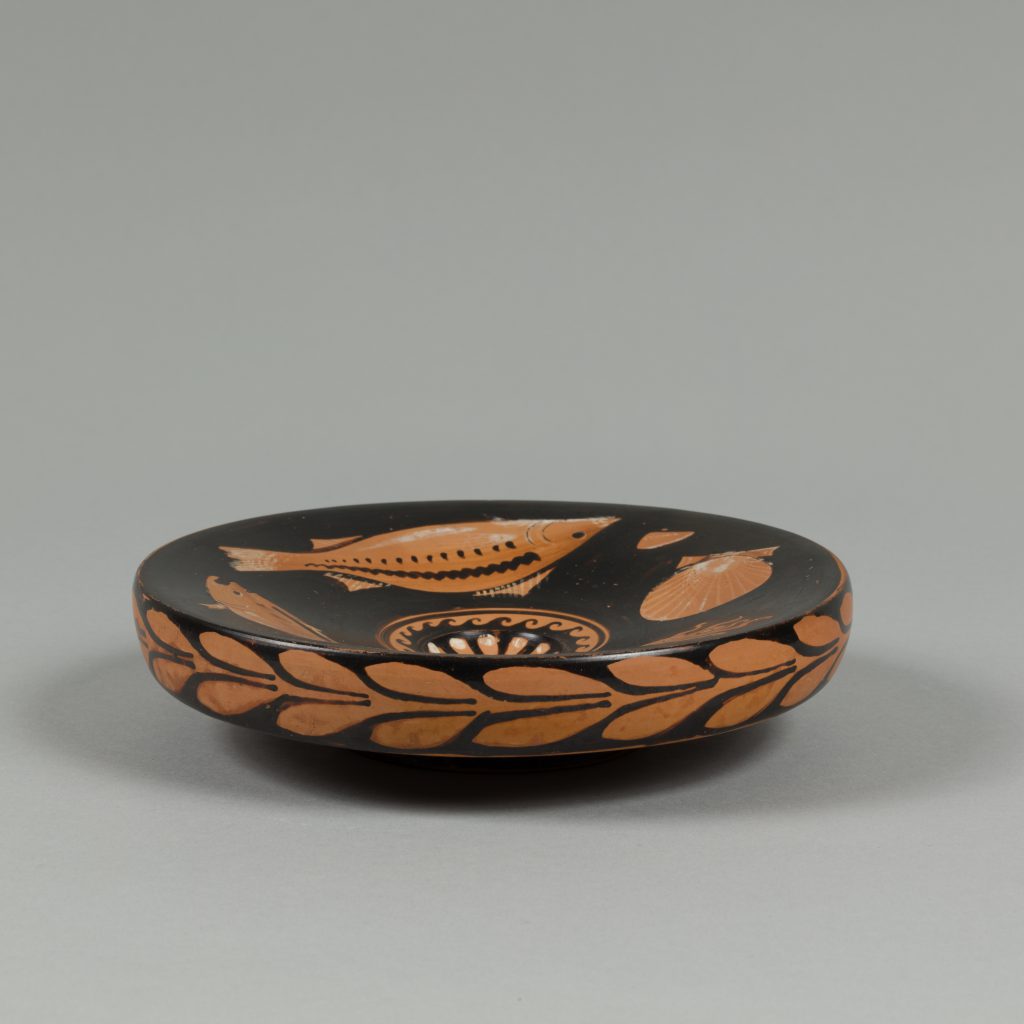
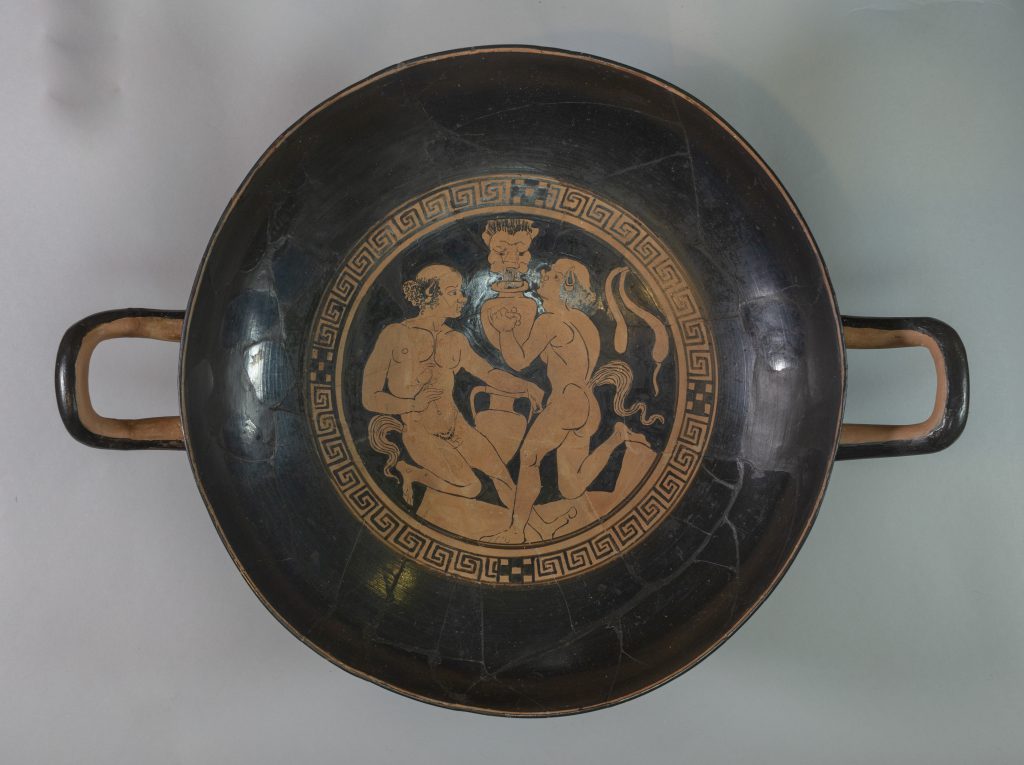

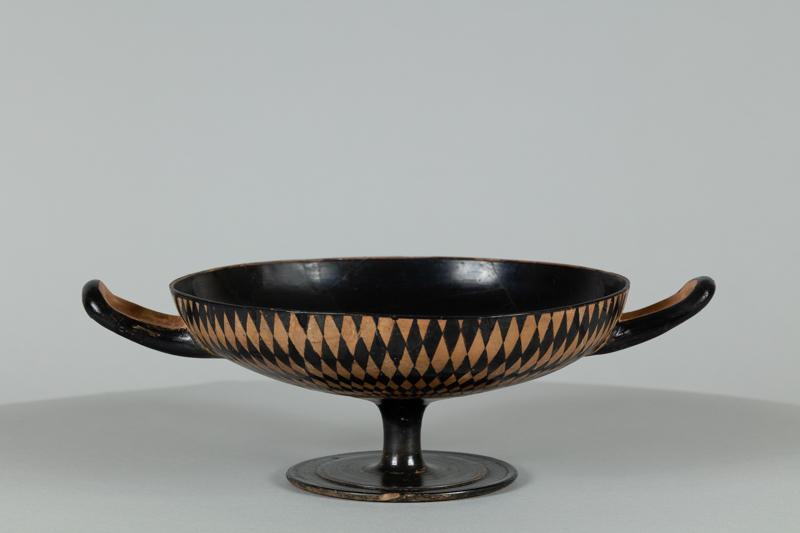

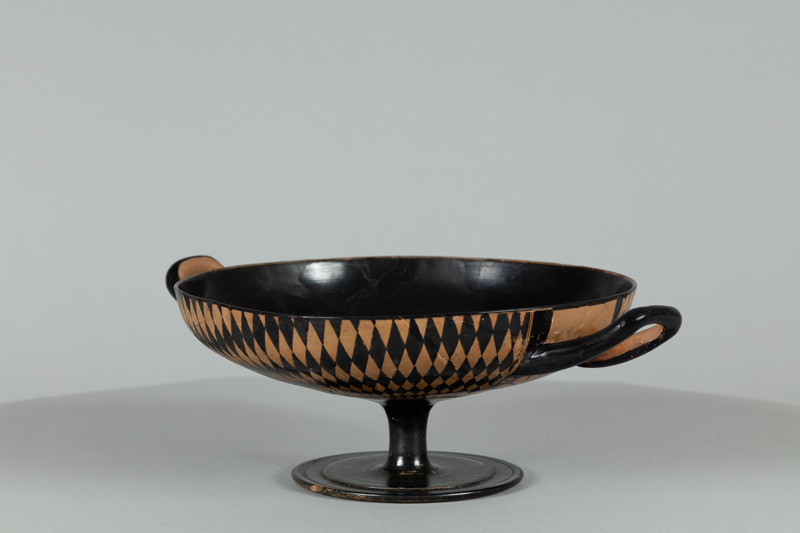
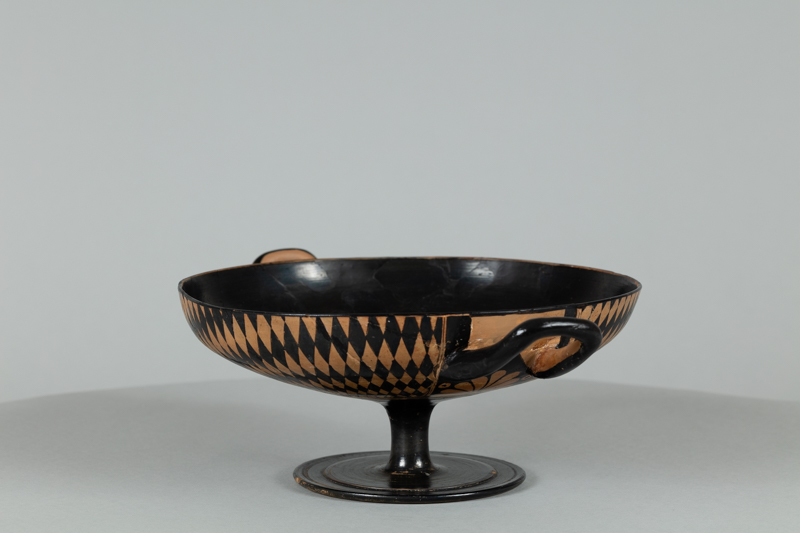
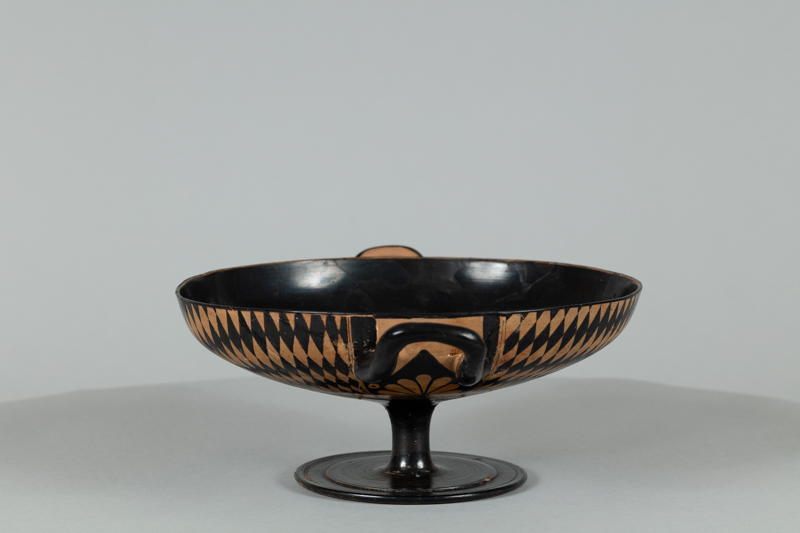

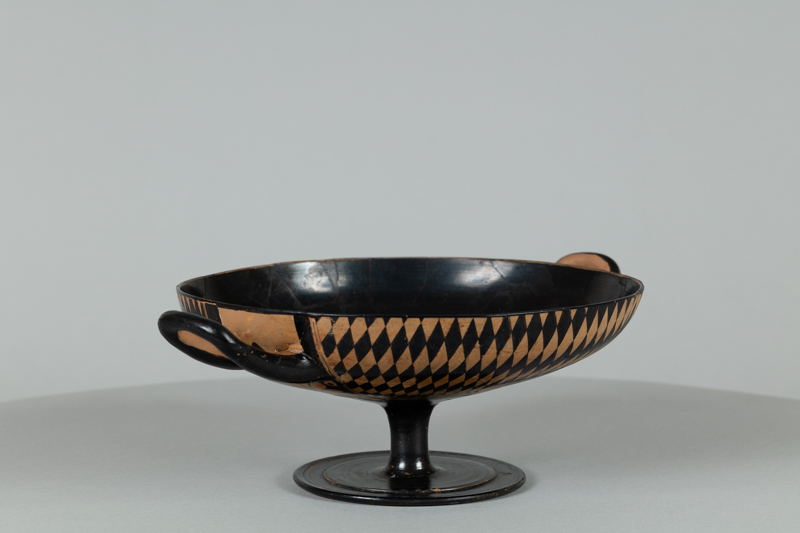


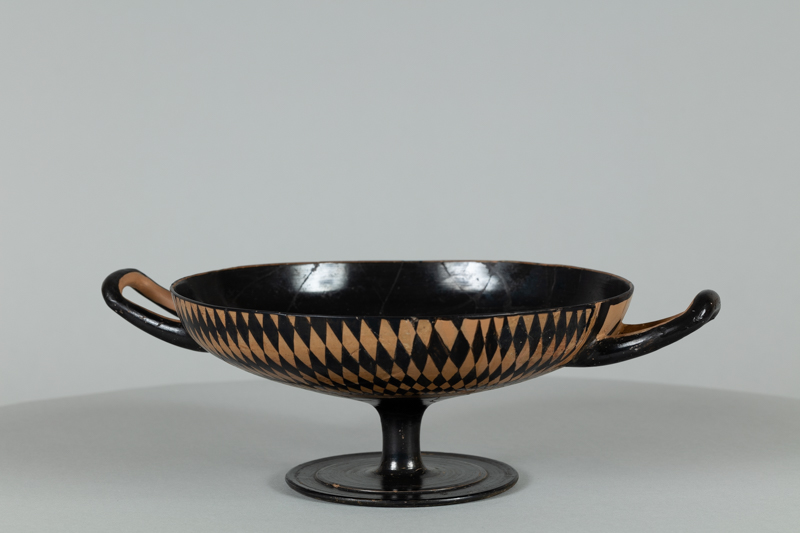

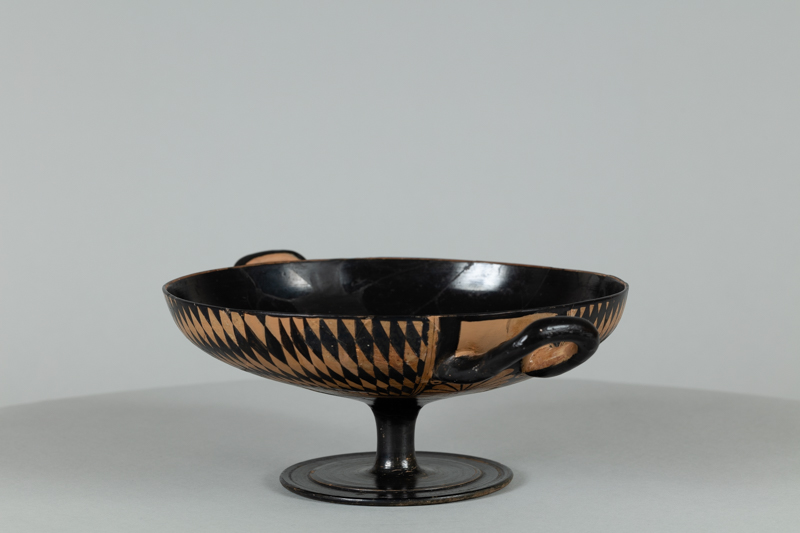


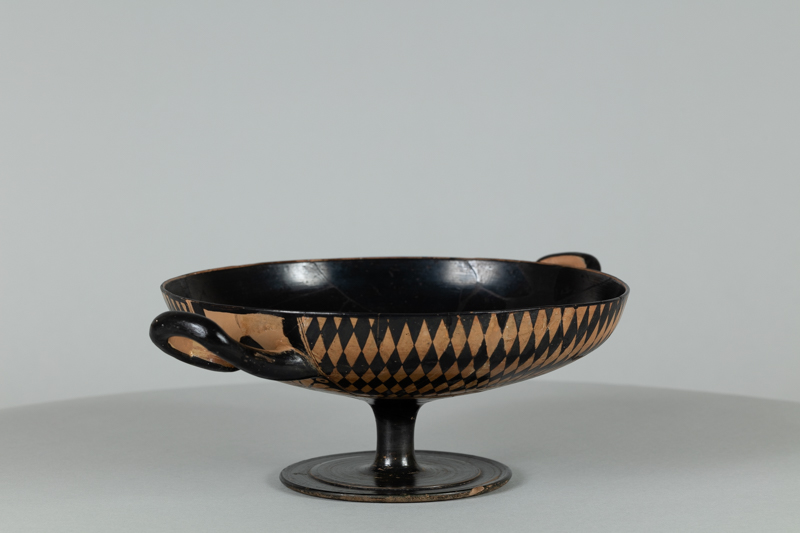

Gift of Edward Perry Warren, Esq., Honorary Degree 1926
1923.4As an Etruscan red-figure vase, this object reflects Greek influence and cultural exchange both in its form and iconography. The kylix was used to drink wine during the Greek symposium, an all-male gathering. The object’s purpose is alluded to by the self-referential iconography in which other symposium vases are depicted in the tondo, the circle illustrated in the center of the cup. Considering Edward Perry Warren’s interests as a collector and commitment to the development of a representative collection, this object likely appealed to him given its connection to Greek leisure culture, its insights as an Etruscan work, and its place within the broader context of symposium vases.
From the seventh century until the second century BCE, the Etruscans occupied much of present-day central Italy, known then as Etruria. The Etruscans treasured Greek vases that demonstrated the exceptional artistic skill of Greek painters and potters, and the proximity between Etruria and the Greek colonies in the south enabled the mass importation of these objects. The significant extent to which they valued these vessels is reflected in the Etruscan style, which strove to emulate Greek painterliness.
This kylix depicts two satyrs, half-man and half-goat hybrids, who are actively engaged in preparing for the symposium. The creature on the viewer’s left can be seen leaning on an amphora, the vessel for wine, while the other fills the hydria with water. Although not illustrated, these two liquids are then poured into the krater (vase) where they are mixed and subsequently served to the Greek men in attendance. As a follower of Dionysus, god of theater and wine, satyrs are often portrayed as mischievous and frequently intoxicated. Thus, their involvement in symposium activities is particularly appropriate. The satyr is a popular figure within both Greek and Roman culture, and the figure is important to Warren’s collection both in terms of its links to a culture of excess and its function within the broader category of bronze sculptures such as the dancing satyr.
Before 1923, collection of Edward Perry Warren; 1923, gifted to the Bowdoin College Museum of Art by Edward Perry Warren.
Collector
A testament to his impact as an influential twentieth-century American antiquities collector, Edward Perry Warren’s (1860–1928, H ’26) name is linked to hundreds of ancient objects housed in institutions across the United States, including more than five hundred works at the Bowdoin College Museum of Art alone.

